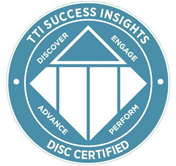In the ever-evolving landscape of the contemporary business world, the role of Human Resources (HR) has undergone a profound transformation. No longer confined to administrative tasks and compliance duties, HR has ascended to a strategic pedestal, wielding influence over an organisation’s long-term success.
At the forefront of deciphering this shift is HR luminary Karl Wood, who brings forth insightful perspectives on the essence of Strategic HR.
Strategic HR vs. Regular HR: A Clear Distinction
Wood underscores a pivotal distinction between Regular HR and its strategic counterpart. “Regular HR,” he elucidates, “is centred around day-to-day functions such as payroll, recruitment, and employee relations, geared towards the efficient management of the workforce.”
In contrast, Strategic HR operates on a grander canvas. It intricately aligns HR practices and policies with the company’s overarching goals. “Strategic HR,” articulates Wood, “extends its vision beyond the immediate. It delves into understanding how HR can drive the organisation’s sustained growth and enhanced competitiveness in the long run.”
A Forward-Thinking Paradigm
Traditional HR functions primarily to manage personnel in an operational capacity, addressing immediate needs as they arise. In contrast, Strategic HR adopts a more proactive approach, anticipating changes in the workforce’s business landscape, technology, and demographics. This allows HR professionals to prepare for future challenges and opportunities, rather than simply reacting to changes as they happen.
Strategic HR professionals act as navigators, guiding their organisations through the seas of change. They analyse data, forecast trends, and identify potential risks and opportunities. By doing so, they are better equipped to make informed decisions and to allocate resources effectively.
In essence, Strategic HR is about aligning HR strategy with the broader goals of the organisation. It involves developing long-term plans that support the company’s mission and values, while also taking into account the needs and aspirations of its employees. By doing so, it helps to create a workplace culture that is both responsive to change and supportive of its workforce.
Metrics and Measurement: The Bedrock of Strategic HR
The efficacy of Strategic HR hinges on data-driven decision-making. Wood underscores, “Strategic HR employs metrics and analytics to gauge the impact of HR initiatives.” These metrics transcend the basics, encompassing facets like talent development, employee engagement, and succession planning.
By measuring these initiatives’ return on investment (ROI), Strategic HR professionals substantiate their role in contributing to the organisation’s bottom line. “This,” adds Wood, “propels HR into the realm of a trusted partner in the boardroom.”
Collaboration with Leadership: A Symbiotic Alliance
In the domain of Strategic HR, collaboration with top leadership is paramount. Strategic HR professionals don dual roles, functioning as administrators and strategic partners. They offer profound insights on leveraging the workforce as a competitive advantage and shaping organisational culture. This collaborative spirit ensures HR practices seamlessly align with the broader objectives of the organisation, proactively identifying and addressing talent gaps.
Adaptability and Future Readiness
Wood contends that adaptability stands as the hallmark of Strategic HR. “It anticipates changes in laws, regulations, and market dynamics,” he asserts. Rather than merely reacting to these changes, Strategic HR formulates proactive strategies to navigate them.
Adaptability emerges as the linchpin for future readiness, ensuring organisations are well-prepared to confront the challenges that lie ahead.
In Conclusion: The Strategic HR Advantage
Amidst unprecedented challenges and opportunities, Strategic HR emerges as an indispensable asset. It not only manages people but also shapes the trajectory of the organisation.
Strategic HR, with its forward gaze, data-driven approach, collaborative ethos, and adaptability, serves as the nexus connecting the workforce with the organisation’s strategic goals. It becomes the catalyst propelling HR professionals into strategic partnerships that guide organisations toward a brighter future.
As Karl Wood aptly encapsulates, “Strategic HR is not a luxury; it’s a necessity for organisations aiming to thrive in the dynamic landscape of the 21st century.” It represents a holistic approach that empowers HR professionals to evolve into strategic partners, steering their organisations toward enduring success.




